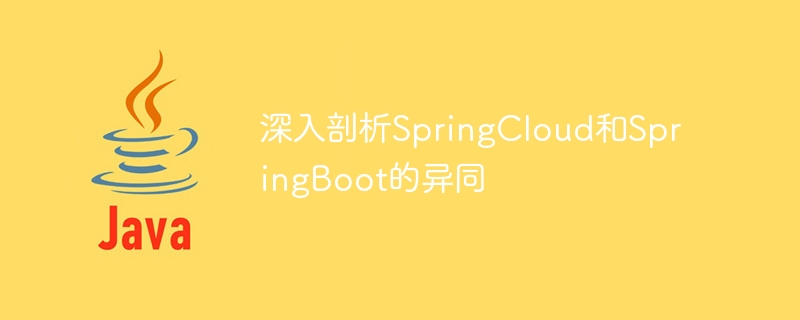

In-depth analysis of the similarities and differences between SpringCloud and SpringBoot
Introduction:
The Spring framework has become the first choice for developers when building enterprise-level applications. It provides a simple and powerful way to build platform-independent applications. The Spring framework consists of two core modules: SpringBoot and SpringCloud. Although they can both help developers build applications quickly, there are some differences in their goals and uses. This article will provide an in-depth analysis of the similarities and differences between Spring Cloud and Spring Boot.
1. Overview of SpringBoot:
SpringBoot is a framework for building independent, deployable, production-grade Spring applications. It cancels complex configuration and provides automatic configuration functions, allowing developers to focus more on the implementation of business logic. SpringBoot emphasizes "convention over configuration" and greatly reduces developers' workload through automated configuration. It provides a fast and easy way to get Spring applications up and running, and integrates seamlessly with other frameworks such as Spring Cloud.
2. Overview of SpringCloud:
SpringCloud is a toolbox for building distributed systems. It is built on Spring Boot and provides a series of components and patterns to enable developers to easily build and manage distributed systems. SpringCloud provides service discovery, load balancing, remote calling, configuration center, circuit breaker and other functions, which greatly simplifies the complexity of building distributed systems. It provides an architectural pattern and a set of tools to help developers build resilient, reliable, and scalable distributed applications.
3. The relationship between SpringBoot and SpringCloud:
SpringCloud is built on SpringBoot. It extends the functions of SpringBoot and provides a series of distributed system support. SpringBoot can be used independently, while SpringCloud needs to be based on SpringBoot. SpringBoot provides the ability to quickly build monolithic applications, while SpringCloud provides the necessary tools and components for building distributed applications.
4. Analysis of similarities and differences:
Conclusion:
SpringBoot and SpringCloud are aimed at different application scenarios, with different goals and uses. SpringBoot mainly focuses on quickly building independent applications, providing simplified configuration and automated functions. SpringCloud focuses on building distributed systems and provides a series of distributed system support. They complement each other. SpringCloud is built on SpringBoot and provides a set of tools and components that allow developers to easily build and manage distributed systems. Whether building independent applications or distributed applications, the Spring framework is the first choice for developers and can help developers quickly build efficient and reliable applications.
The above is the detailed content of Compare the differences and commonalities between SpringCloud and SpringBoot for an in-depth analysis. For more information, please follow other related articles on the PHP Chinese website!




